Prosauropods
|
The Sauropodomorpha is the group of herbivorous dinosaurs with long necks and small heads, made famous by such species as Brontosaurus. The most primitive members of the Sauropodomorpha are a paraphyletic group collectively referred to traditionally as the prosauropods. While these have long necks with small heads, they are not as large and extreme as the sauropods. Most prosauropods were bipedal. Prosauropods originated during the Triassic period and were replaced by sauropods in the early Jurassic.
Plateosaurus sp. is one of the best know prosauropods.
Taxonomy: Sauropodomorpha, Plateosauridae
Europe
Late Triassic Period, 214-204 Ma
Arizona Science Center (temporary exhibit)
|
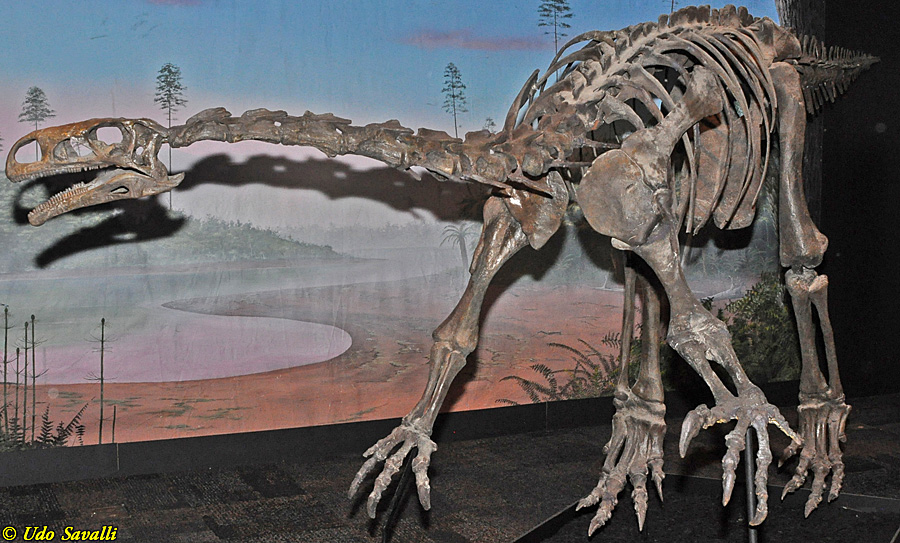
|
|
|
Plateosaurus was likely an herbivore, although an omnivorous diet is sometimes suggested.
Taxonomy: Sauropodomorpha, Plateosauridae
Europe
Late Triassic Period, 216-199 Ma
Museum of Ancient Life, Utah
|
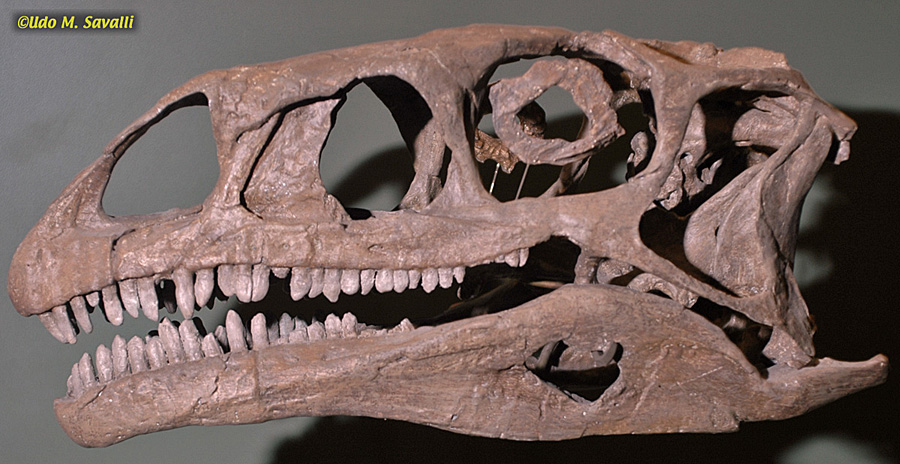
|
|
|
Lufengosaurus sp.
Taxonomy: Sauropodomorpha, Massospondylidae
Lower Lufeng Formation, China
Early Jurassic Period
Arizona Science Center (temporary exhibit)
|
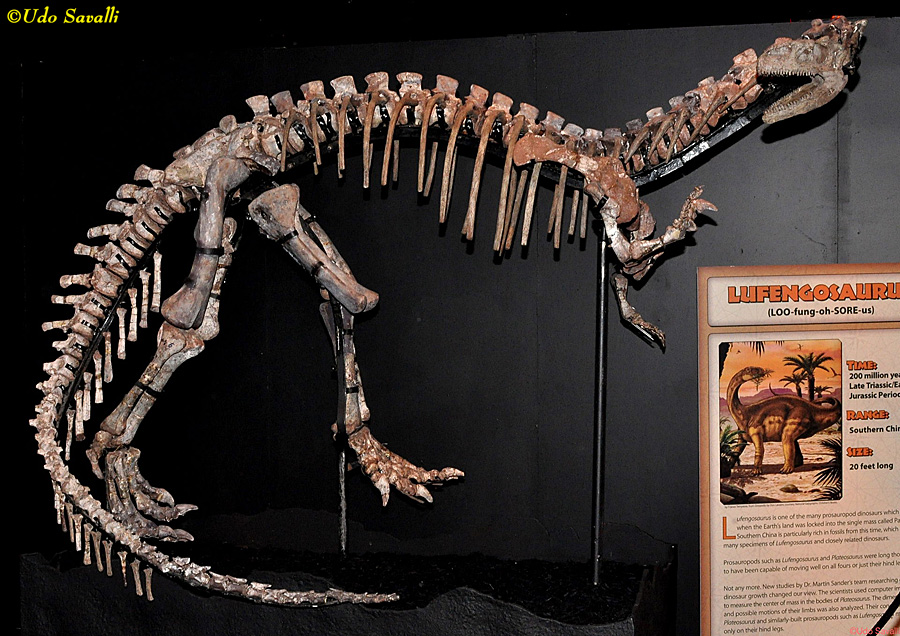
|
|
|
Cast of fossil Massospondylus carinatus embryo.
Taxonomy: Sauropodomorpha, Massospondylidae
South Africa
Early Jurassic Period, 200-180 Ma
Los Angeles Museum of Natural History
|
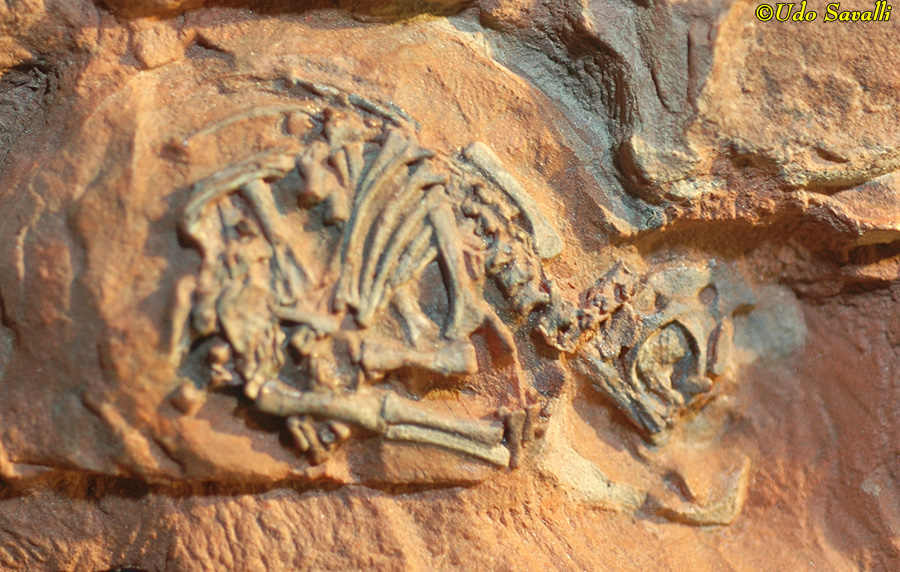
|
|
Sauropoda
|
The Sauropoda is a clade of large to enormous plant-eating dinosaurs with moderately to very long necks and small skulls. They are all quadrupedal (as opposed to the more bipedal prosauropods).
Bellusaurus sui is basal sauropod, a relatively primitive member of that group. It was relatively small, abut 4.8 m long.
Taxonomy: Sauropodomorpha, Sauropoda, Mamenchisauridae
China
Middle Jurassic Period, 170 Ma
Arizona Science Center (temporary exhibit)
|
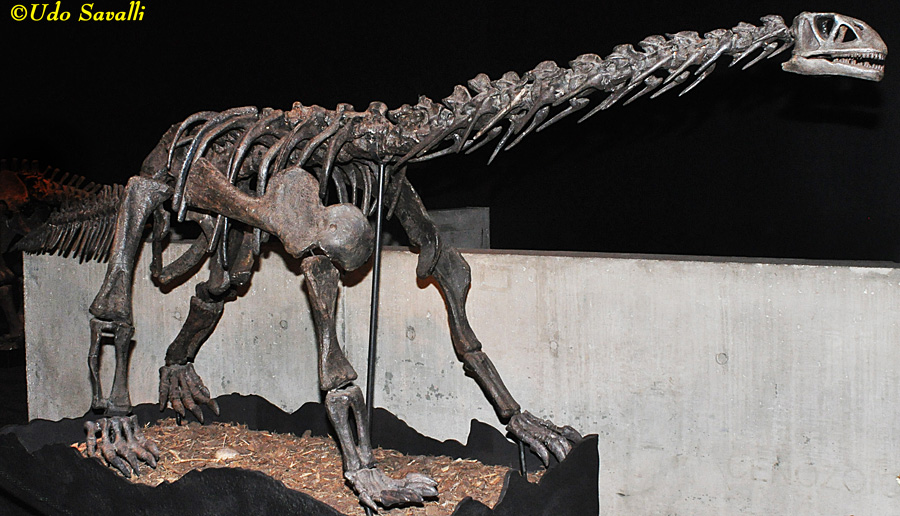
|
|
|
Mamenchisaurus sp. has one of the longest necks of any animal.
Taxonomy: Sauropodomorpha, Sauropoda, Mamenchisauridae
China
Late Jurassic Period, 160-145 Ma
Arizona Science Center (temporary exhibit)
|
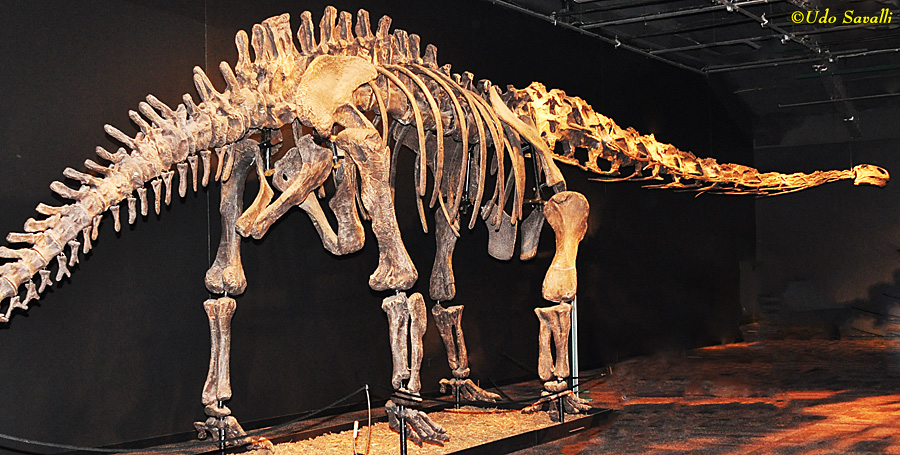
|
|
|
The Diplodocoidea is a clade of sauropods characterized by a more slender, light build, long necks (with long, split, vertebral spines), and extremely long, slender tails, as in this Diplodocus longus.
Taxonomy: Sauropodomorpha, Sauropoda, Diplodocidae
Western North America
late Jurassic Period
Denver Museum of Science & Nature
|
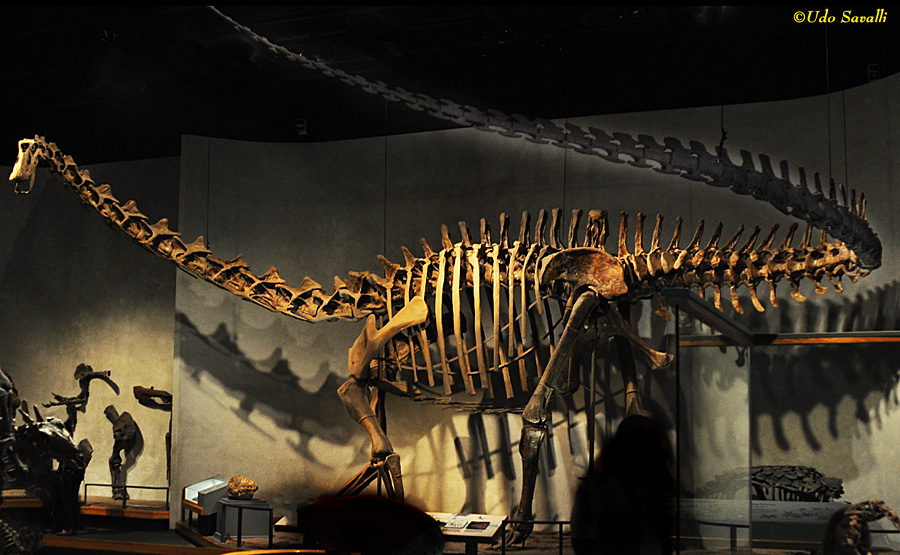
|
|
|
Supersaurus vivianae was one of the longest dinosaurs that is known reasonably well, reaching 34 m long (but it is not the heaviest).
Taxonomy: Sauropodomorpha, Sauropoda, Diplodocidae
Morrison Formation, Western North America
Late Jurassic Period, 156-148 Ma
Wyoming Dinosaur Center
|
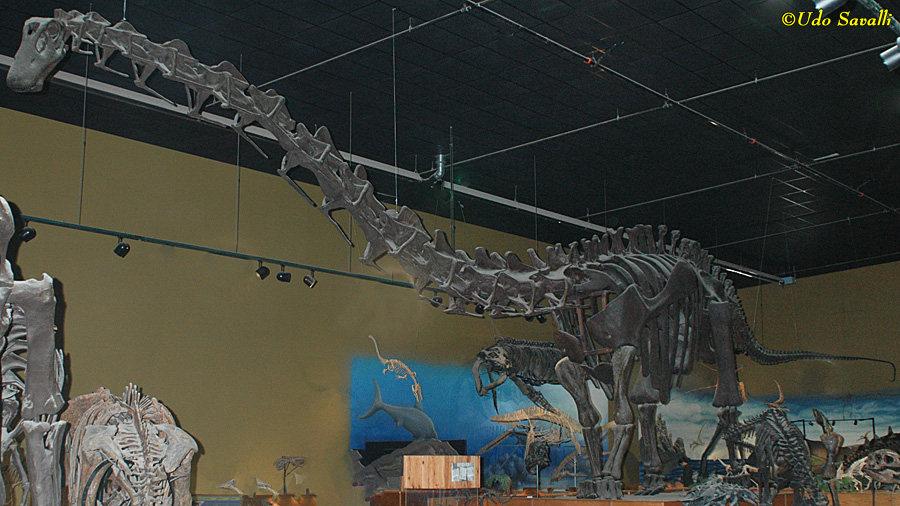
|
|
|
Cast of a juvenile diplodocoid, probably Apatosaurus sp.
Taxonomy: Sauropodomorpha, Sauropoda, Diplodocidae
Morrison Formation, Howe Quarry, Big Horn Co., WY
Late Jurassic Period, 145 Ma
Black Hills Institute Museum, South Dakota
|
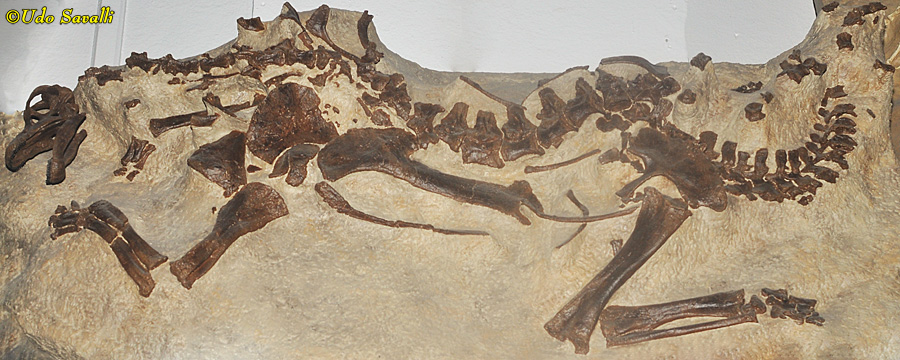
|
|
|
The "Livingston Sauropod" represents an as yet unnamed species.
Taxonomy: Sauropodomorpha, Sauropoda, Diplodocidae
Park Co., Montana
Museum of the Rockies, Montana
|

|
|
|
Amargasaurus sp. was moderately sized. The function of the elongated neck spines is uncertain. They may have provided protection against predators or were used in social signalling or mate attraction.
Taxonomy: Sauropodomorpha, Sauropoda, Dicraeosauridae
Argentina
Early Cretaceous Period, 130-125 Ma
Arizona Science Center (temporary exhibit)
|
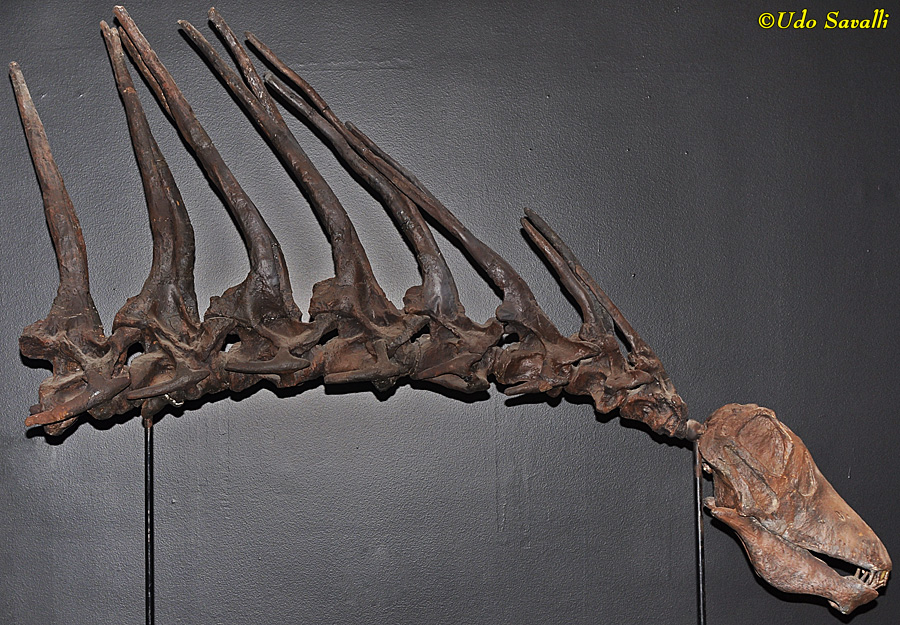
|
|
|
The clade Macronaria includes the largest animals to ever walk on land (and also some of the smallest sauropods). They were generally robustly built with a shorter, deeper skull than that of the diplodocoids, and probably generally fed on higher vegetation.
Brachiosaurus sp. are exceptionally tall sauropods: their front legs are longer than their hind legs giving them even more reach with their upright necks.
Taxonomy: Sauropodomorpha, Sauropoda, Macronaria, Brachiosauridae
Western North America
Late Jurassic Period, 153 Ma
Museum of Ancient Life, Utah
|
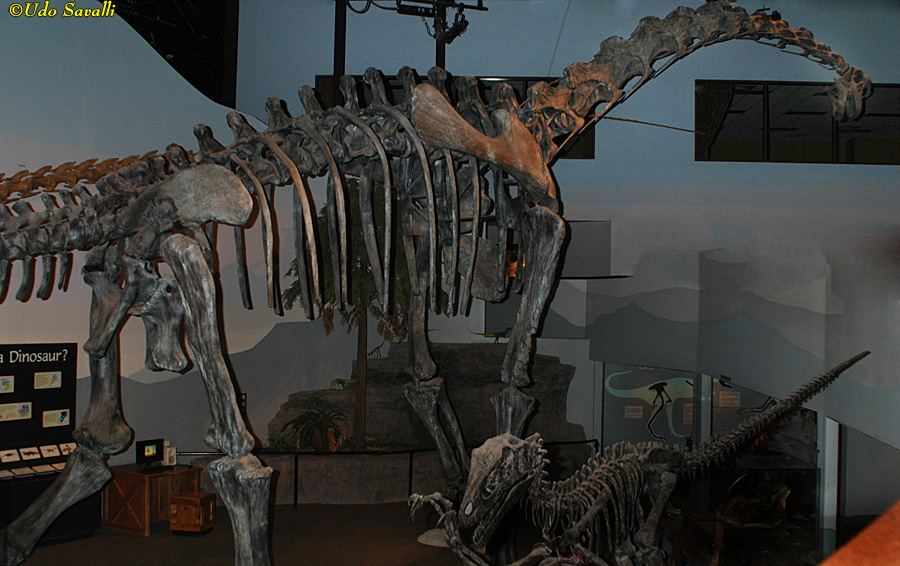
|
|
|
Although the nares of the Brachiosaurus sp. skull (cast) were large and located on the forehead, the actual nostrils were nearer the front due to soft tissue covering.
Taxonomy: Sauropodomorpha, Sauropoda, Macronaria, Brachiosauridae
Morrison Formation, Freemont Co., Colorado
Late Jurassic Period, 150 Ma
Denver Museum of Science & Nature
|
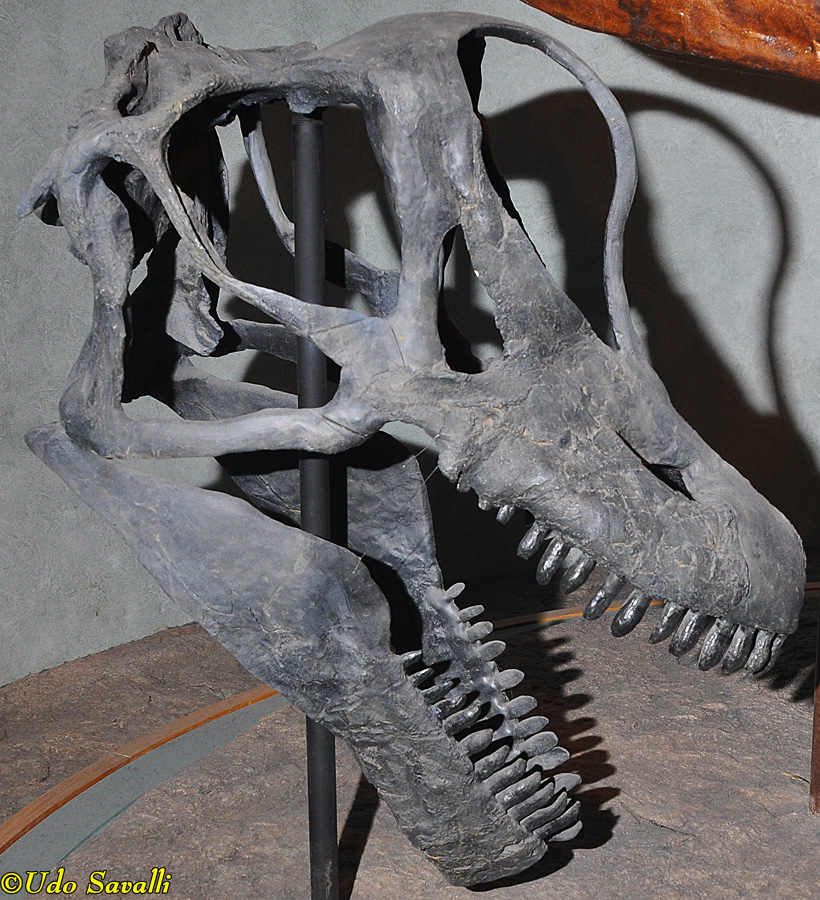
|
|
|
Sonorasaurus thompsonii reconstructed hind leg.
Taxonomy: Sauropodomorpha, Sauropoda, Macronaria, Brachiosauridae
Arizona
Middle Cretaceous, Albian-Cenomanian Stage, 112-93 Ma
Arizona-Sonora Desert Museum
|

|
|
|
Sonorasaurus thompsonii fossils in situ (cast).
Taxonomy: Sauropodomorpha, Sauropoda, Macronaria, Brachiosauridae
Arizona
Middle Cretaceous, Albian-Cenomanian Stage, 112-93 Ma
Arizona-Sonora Desert Museum
|
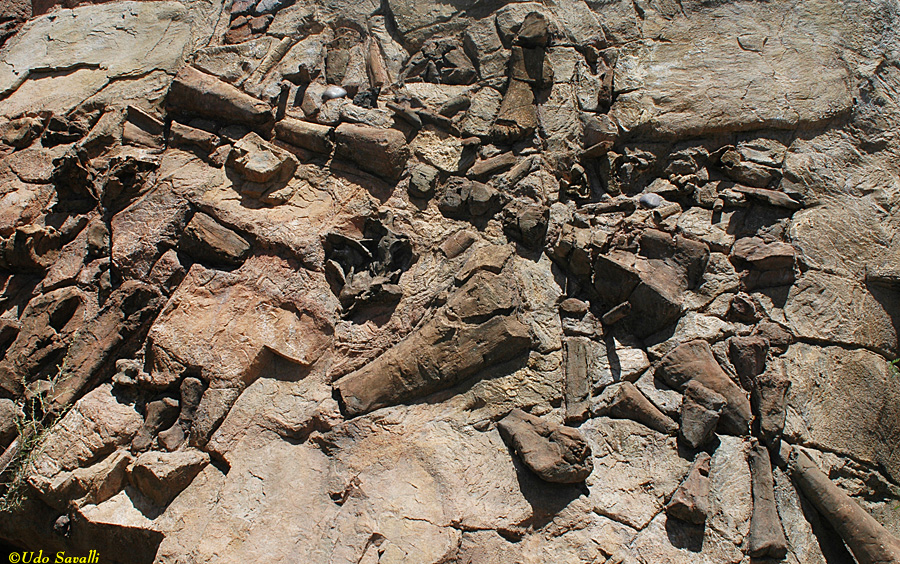
|
|
|
Camarasaurus sp. was one of the most common sauropods in the late Jurassic Morisson Formation.
Taxonomy: Sauropodomorpha, Sauropoda, Macronaria, Camarasauridae
Western North America
Late Jurassic Period, 155-145 Ma
Arizona Museum of Natural History
|
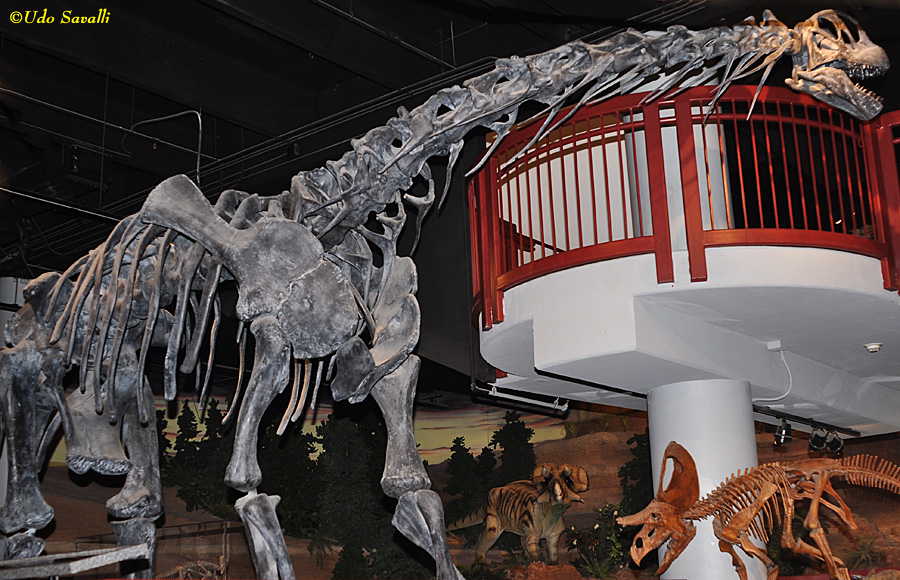
|
|
|
Camarasaurus sp. skull in field jacket.
Taxonomy: Sauropodomorpha, Sauropoda, Macronaria, Camarasauridae
Morrison Formation, Crook Co., Wyoming
Late Jurassic Period, 150 Ma
Black Hills Institute Museum, South Dakota
|
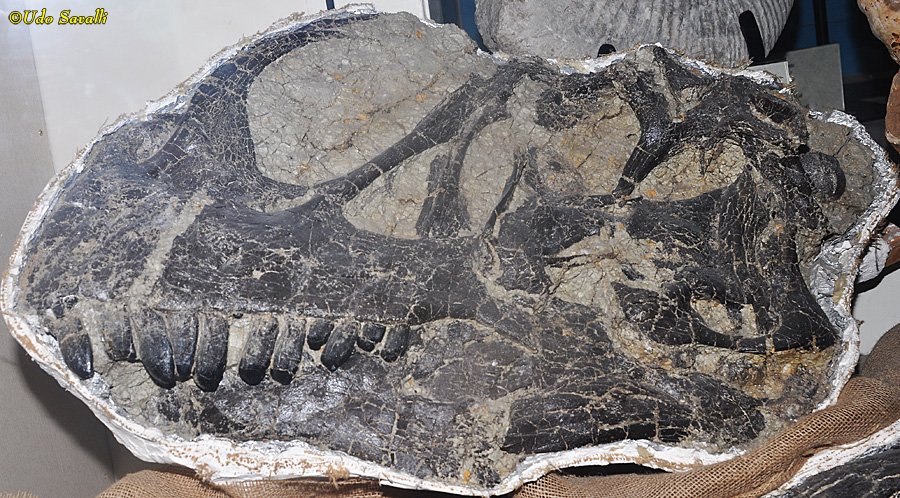
|
|
|
Camarasaurus sp. skull cast.
Taxonomy: Sauropodomorpha, Sauropoda, Macronaria, Camarasauridae
Morrison Formation, Wyoming
Late Jurassic Period, 156-148 Ma
Wyoming Dinosaur Center
|
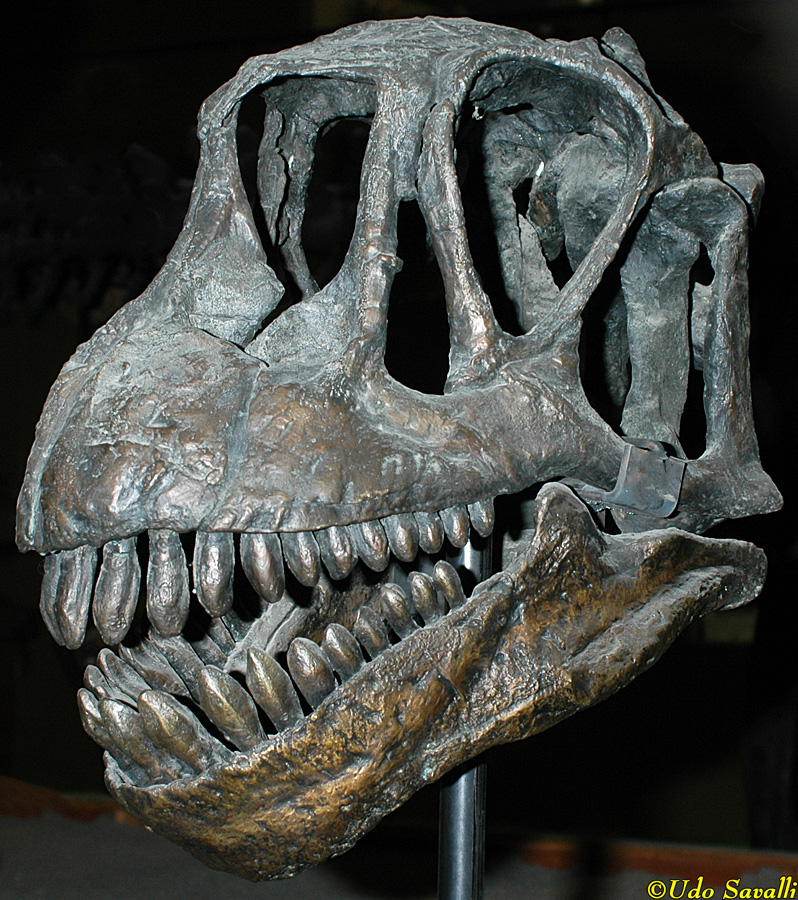
|
|
|
Like all Sauropods, the manus (hand) of Camarasaurus lentus has only one claw, on the thumb (cast).
Taxonomy: Sauropodomorpha, Sauropoda, Macronaria, Camarasauridae
Western North America
Late Jurassic Period, 150 Ma
St. George Dinosaur Discovery Site, Utah
|
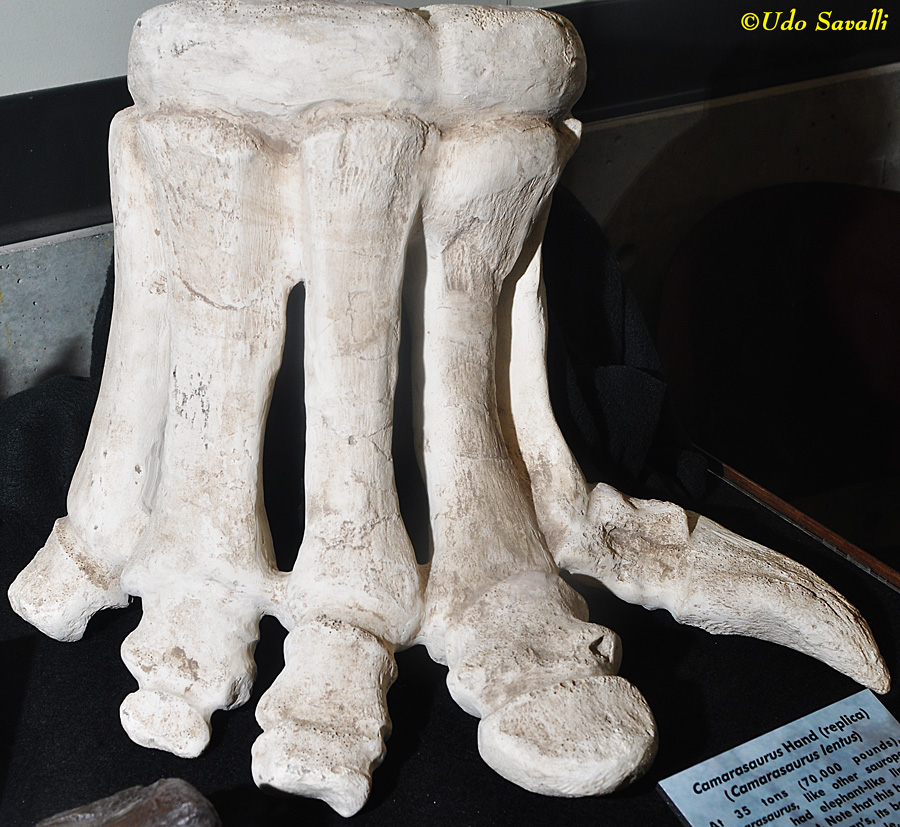
|
|
|
The titanosaurs, such as this Argentinosaurus huinculensis, include most of the largest sauropods. They were mostly restricted to the southern hemisphere.
Taxonomy: Sauropodomorpha, Sauropoda, Titanosauria
Argentina
Late Cretaceous Period, 96-94 Ma
Fernbank Museum of Natural History, Atlanta
|
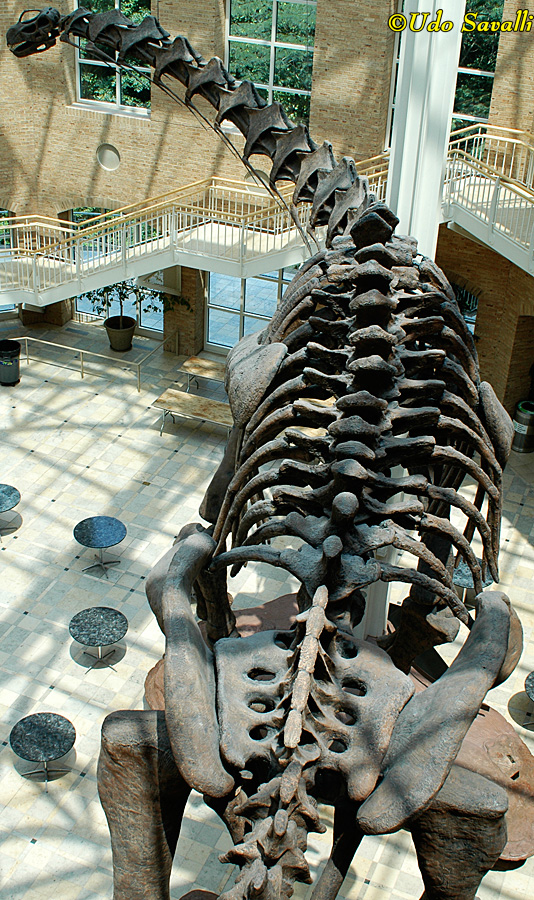
|
|
|
Skull and cervical vertebrae of Argentinosaurus huinculensis.
Taxonomy: Sauropodomorpha, Sauropoda, Titanosauria
Argentina
Late Cretaceous Period, 96-94 Ma
Fernbank Museum of Natural History, Atlanta
|

|
|
|




















